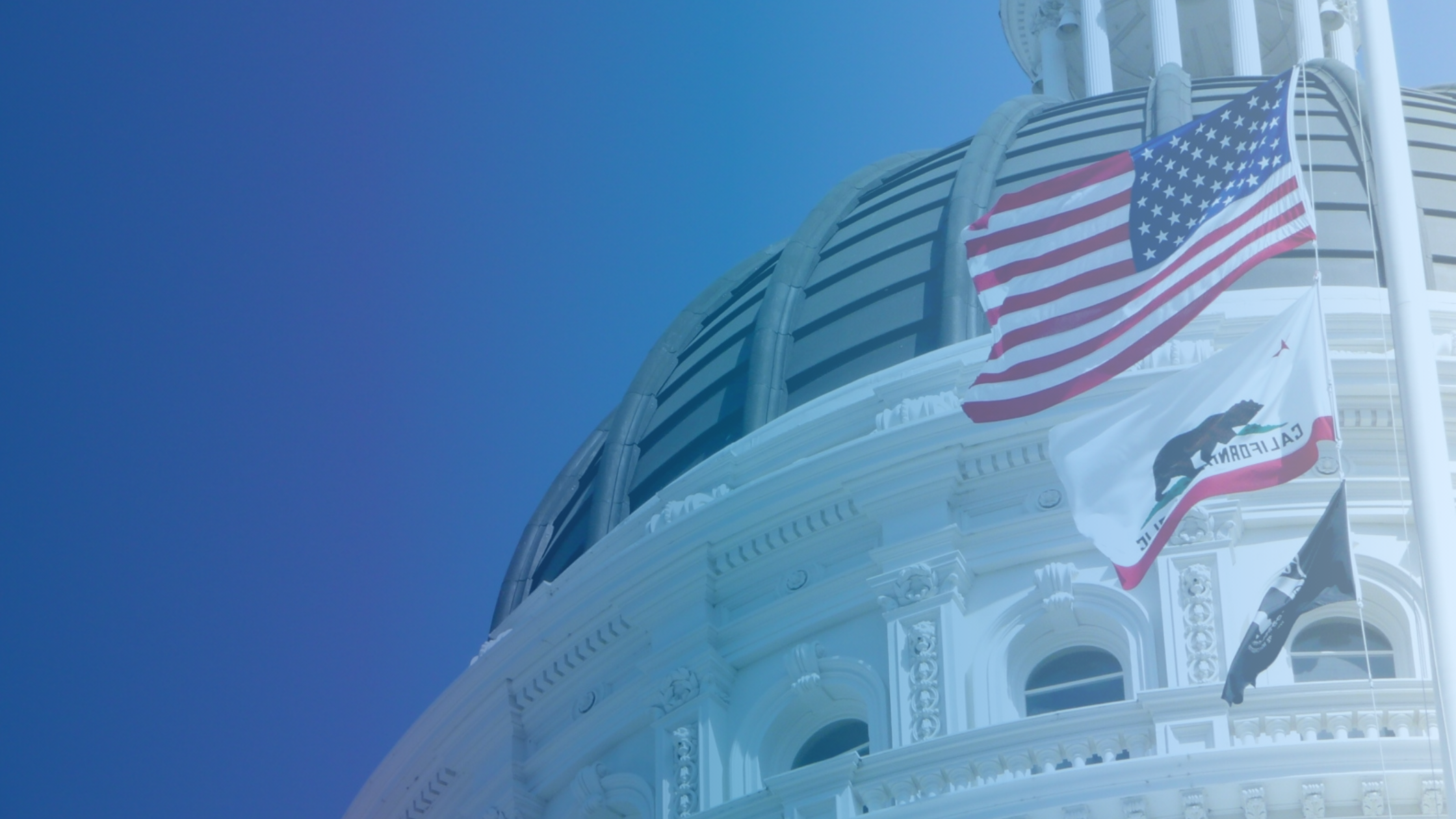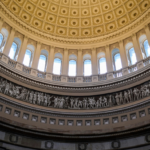Case Law Analysis: Landmark Decisions in California’s Legal History

Case Law Analysis: Landmark Decisions in California’s Legal History
Estimated reading time: 10 minutes
Landmark legal decisions serve as the milestones along the path of legal and societal evolution, marking the moments when the judiciary has significantly redirected or affirmed various approaches to justice, equality, and governance. Pivotal rulings stand out not just for their immediate impact on the parties involved but for their enduring influence on the legal landscape, shaping the interpretation of laws and principles that govern millions of lives.
This post delves into a selection of such landmark cases in California, each a testament to the dynamic interplay between law and society. From the abolition of the death penalty in People v. Anderson (1972) to the introduction of market-share liability in Sindell v. Abbott Laboratories (1980), and from environmental protection in Silicon Valley Taxpayers’ Association, Inc. v. Santa Clara County Open Space Authority (2008) to the rights of same-sex couples in In re Marriage Cases (2008), these decisions highlight the breadth of issues tackled by California’s courts.
A ‘landmark’ case, in this context, is identified by its introduction of new legal principles, its ability to cause a significant shift in societal norms or legal practice, or its lasting impact on future legal interpretations. Through these criteria, we explore how each case has contributed to the fabric of California’s legal history, painting a vivid picture of the state’s journey through the complexities of justice and equity.
People v. Anderson, 6 Cal. 3d 628 (1972)
In 1972, the California Supreme Court delivered a landmark ruling in People v. Anderson, a decision that not only reshaped the state’s approach to the death penalty but also sparked a nationwide conversation about capital punishment. The case centered on Robert Page Anderson, who was convicted of murder in 1968. Anderson’s appeal to the California Supreme Court became the fulcrum for a broader legal and moral debate on the constitutionality of the death penalty under the California Constitution.
Background
The backdrop of People v. Anderson was a period of what the California Supreme Court perceived as intense scrutiny and evolving attitudes towards the death penalty in the United States. Amid growing concerns about the fairness, morality, and administration of capital punishment, Anderson’s case challenged the California Supreme Court to reevaluate the state’s death penalty statute. The pivotal question was whether this ultimate form of punishment constituted “cruel or unusual” treatment under the California Constitution, an issue that reflected broader societal debates on justice and human rights.
Ruling
The California Supreme Court’s decision in People v. Anderson was groundbreaking. The court ruled that the death penalty, as it was then administered, violated the California Constitution’s prohibition against cruel or unusual punishment. The justices argued that capital punishment was inconsistent with contemporary standards of decency and pointed to the arbitrariness and discriminatory application of the death penalty as key factors in their decision.
Impact
The immediate effect of the ruling was the commutation of death sentences for all prisoners on California’s death row to life imprisonment, significantly altering the fates of hundreds. In the longer term, the decision ignited a statewide and national debate on the death penalty, leading to legislative attempts to reinstate capital punishment through statutory changes and ballot initiatives. While the death penalty was eventually reinstated in California, People v. Anderson remains a seminal case in the ongoing discussion about the morality, efficacy, and application of capital punishment. The case highlighted the judiciary’s role in reflecting and influencing shifts in societal values, demonstrating the dynamic nature of the law in responding to evolving standards of justice and humanity.
Sindell v. Abbott Laboratories, 26 Cal. 3d 588 (1980)
Sindell v. Abbott Laboratories represents a watershed moment in the landscape of tort law, particularly within the context of product liability and the challenges it presents. This case emerged from a complex scenario involving multiple defendants and the profound difficulty plaintiffs faced in establishing causation due to the generic nature of certain products. The landmark ruling by the California Supreme Court not only illuminated the struggles individuals encounter when seeking justice for widespread harm caused by pharmaceuticals but also set a precedent that would influence the principles of liability and compensation in the legal realm. The introduction of market-share liability through this case marked a significant evolution in tort law, demonstrating the judiciary’s adaptability to the nuances of modern legal challenges and its commitment to ensuring that victims have a viable pathway to remedy.
Background
Sindell v. Abbott Laboratories centered around a lawsuit brought by a plaintiff, Judith Sindell, against several pharmaceutical companies. The lawsuit was filed over injuries purportedly caused by the drug Diethylstilbestrol (DES), which had been prescribed to Sindell’s mother during pregnancy to prevent miscarriages. DES was later linked to a rare form of cancer and other significant health issues in the daughters of women who had taken the drug. The challenge in this case, and others like it, was the difficulty in identifying the specific manufacturer of the DES taken by any given patient, due to the generic nature of the drug and the time elapsed since its consumption.
Ruling
The California Supreme Court recognized the difficulty plaintiffs faced in pinpointing the exact manufacturer of the DES that caused their injuries and introduced the concept of market-share liability. Under this novel doctrine, each defendant (manufacturer) could be held liable based on the proportion of the market share they held for DES. This allowed plaintiffs to recover damages without identifying the specific manufacturer of the drug they had been exposed to, provided they could sue a substantial percentage of the market producers.
Impact
The immediate effect of the ruling was to provide a path to compensation for victims of DES and similar products, where the specific causative agent of harm could not be identified. The broader long-term implications have reverberated through tort law, significantly influencing product liability cases. The market-share liability doctrine introduced by the Sindell case has been applied and adapted in various jurisdictions, reflecting on issues of fairness, responsibility, and practicality in cases where direct causation is difficult to establish. This decision underscored the California courts’ willingness to adapt legal doctrines to meet the complexities of modern life and has been influential in shaping approaches to collective liability in the legal landscape.
Kasler v. Lockyer, 23 Cal. 4th 472 (2000)
Kasler v. Lockyer addressed the contentious issue of gun control within the framework of the Second Amendment. This landmark decision upheld the state’s stringent assault weapons ban, balancing public safety interests with constitutional rights and setting a precedent for future legislation.
Background
Kasler v. Lockyer stemmed from the legal challenges against the 1989 Roberti-Roos Assault Weapons Control Act (AWCA), which was one of the United States’ first instances of state-level legislation aimed at regulating the possession and sale of specific models of semi-automatic firearms identified as assault weapons. The plaintiffs, a group of gun owners and advocacy organizations, challenged the constitutionality of the AWCA, arguing that it violated their Second Amendment rights and contended that the law was vague and failed to provide clear guidance on what constituted an “assault weapon.”
Ruling
The California Supreme Court upheld the AWCA, ruling that the law was constitutional and did not violate the Second Amendment. The Court found that the state had a legitimate interest in enhancing public safety and could regulate the possession and sale of certain types of firearms deemed to be more dangerous than others. The ruling was significant for its affirmation of the state’s ability to enact gun control legislation within the framework of the Second Amendment, particularly in defining and banning assault weapons.
Impact
The immediate effect of the Kasler v. Lockyer decision was to uphold the AWCA, allowing California to maintain and enforce one of the nation’s strictest sets of regulations on assault weapons. The broader implications have been profound, setting a precedent for gun control legislation within California and influencing other states to consider similar measures. The case has been a critical reference point in the ongoing national debate over gun control and the balance between public safety and Second Amendment rights, illustrating the complex interplay between state legislation and constitutional freedoms.
In re Marriage Cases, 43 Cal. 4th 757 (2008)
In re Marriage Cases (2008) marked a significant moment in the struggle for LGBTQ+ rights, specifically regarding same-sex marriage. This case was the culmination of several lawsuits filed by same-sex couples and the city of San Francisco challenging the state’s laws that defined marriage exclusively as a union between a man and a woman. These legal challenges were rooted in a broader national and state-level discourse on the rights of same-sex couples, reflecting shifting societal attitudes towards marriage equality.
Background
The backdrop of In re Marriage Cases was a period of intense legal and social debate over the rights of same-sex couples to marry. In 2000, California voters had approved Proposition 22, which codified the definition of marriage as a union between a man and a woman. However, as societal attitudes evolved, legal challenges to this definition emerged, arguing that it violated the California Constitution’s guarantees of equal protection and due process.
Ruling
The California Supreme Court ruled that the state constitution’s equal protection clause guaranteed same-sex couples the right to marry, thus rendering the existing statutory ban on same-sex marriage unconstitutional. The justices argued that sexual orientation constitutes a suspect class, deserving of the highest level of scrutiny, and that any law discriminating on this basis must be justified by a compelling state interest—which the ban could not.
Impact
The immediate effect was the legalization of same-sex marriage in California, a monumental victory for LGBTQ+ rights. This decision made California the second state in the U.S., after Massachusetts, to recognize such a right. The broader long-term implications have been profound, contributing significantly to the national dialogue on marriage equality and paving the way for the eventual U.S. Supreme Court rulings that would legalize same-sex marriage nationwide. In re Marriage Cases not only transformed the legal status of same-sex couples in California but also symbolized a significant shift in societal values towards inclusivity and equality.

Continuing Education of the Bar (CEB): Essential Legal Research Tools
CEB’s commitment to following landmark California cases like these is evident in the breadth and depth of its offerings. CEB provides a range of online services designed to enhance legal practice, including:
1. CEB Practitioner: CEB’s Practitioner Tool is a comprehensive online resource designed for trial lawyers. It offers a vast array of case law, statutes, and practical guides across various legal fields. This tool streamlines research, enhances legal practice efficiency, and provides up-to-date information, making it invaluable for lawyers seeking quick and reliable legal insights. All Practitioner resources are written by California lawyers, for California lawyers.
2. OnLAW Pro: CEB’s all-in-one legal research solution with authoritative practice guides, OnLAW Pro is written by California lawyers for California lawyers. All practice guides are fully integrated with CEB’s primary law research tool, allowing you to research California, Ninth Circuit Court of Appeals, and U.S. Supreme Court case law, as well as California statutes and the California Constitution. OnLAW also comes with TrueCite®, CEB’s powerful case law citator.
3. MCLE Solutions: CEB’s MCLE solutions, including CLE Passport and CEB’s CLE Compliance Package, provide a robust platform for new trial lawyers seeking to fulfill their CLE requirements. These solutions offer a diverse range of courses, covering various legal topics and practice areas. Designed for convenience and flexibility, the programs are available online, allowing attorneys to access high-quality, accredited educational content anytime, anywhere. CEB’s MCLE Solutions are an ideal blend of practicality and expertise, ensuring legal professionals stay informed, compliant, and at the forefront of their field.
4. Sample Templates and Form: With over 50 billion filings made, CEB’s Sample Templates & Forms offer a seamless solution for creating, printing, and storing these critical legal documents. Subscribers benefit from early access to the latest form updates, ensuring compliance and preventing filing rejections due to outdated forms.
Designed to meet the unique needs of trial lawyers, our tools offer unparalleled support in case law research, legal analysis, and staying updated with the latest judicial decisions. By choosing CEB, you gain access to a wealth of knowledge, enabling you to navigate complex legal landscapes with confidence and precision. Don’t let critical updates and strategic insights pass you by—join the esteemed community of attorneys who trust CEB to enhance their practice.
Read more related content
- California’s Proposed Antitrust Crackdown: SB 763 Penalties Could Jump from $1 Million to $100 MillionCalifornia’s Proposed Antitrust Crackdown: SB 763 Penalties Could Jump from $1 Million to $100 Million A $1 million penalty for California corporations found guilty of criminal antitrust charges could soon … Continued
- California Wildfire Legal Response: Executive Orders, CEQA Exemptions, and Rebuilding GuidelinesCalifornia Wildfire Legal Response: Executive Orders, CEQA Exemptions, and Rebuilding Guidelines The Los Angeles and Ventura County wildfires are, first and foremost, a human tragedy, displacing families, devastating communities and … Continued
- Navigating the Litigation Process in California: A Practitioner’s Handbook Litigation in California can be a complex and time-intensive process, requiring legal practitioners to have a thorough understanding of procedural rules, case law, and effective legal strategies. Whether representing plaintiffs … Continued



